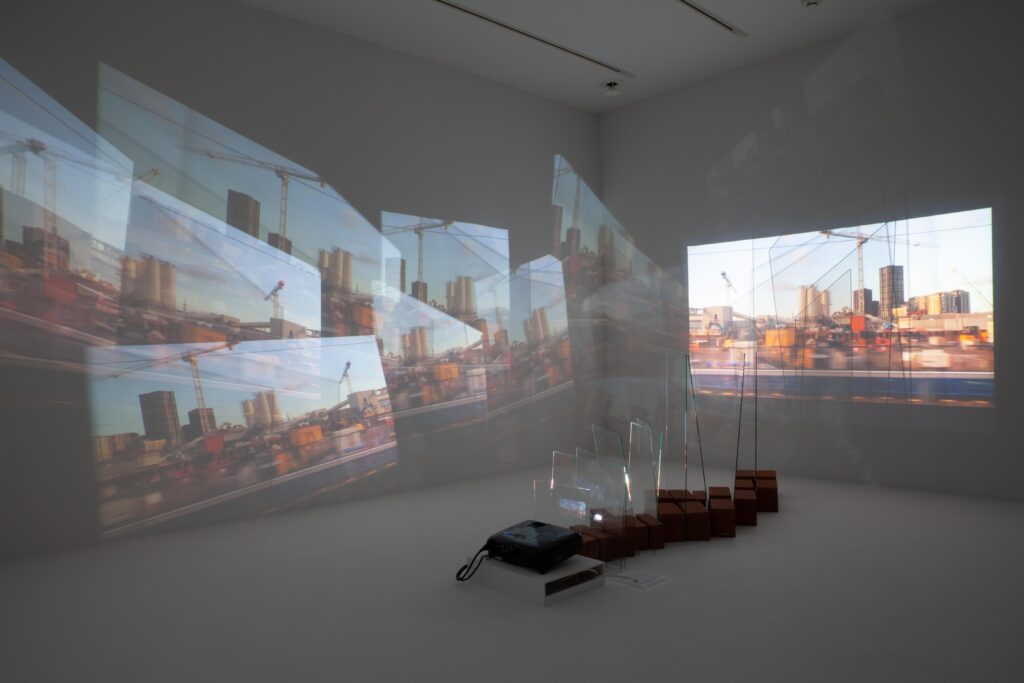TT Journal, ISSUE 7, September 2024
by Kaz
The question of ‘what is time?’ has baffled humanity for an eternity. In order to explore this apparently ungraspable concept, I will first present ‘Time and Eternity’, a short essay written for a Japanese newspaper in 1959 by D.T. Suzuki (1870-1966). I will then use the text as a starting point to investigate time in relation to eternity, in particular, focusing on the concept of the ‘absolute now’, which is a key point made in ‘Time and Eternity’.
D.T. Suzuki was a Japanese Zen Buddhist scholar who lived in the US for nearly a decade, teaching at Columbia University during that time and had numerous books published in English. He was one of the key figures to introduce Zen Buddhism to the West, influencing John Cage, Allen Ginsberg and Jack Kerouac amongst others.
The essay was only published in Japanese and the English translation presented here is by myself. The original text is written in a formal style with an archaic use of Japanese words. I endeavoured to retain this style, as much as possible.
‘Time and Eternity’ by D.T. Suzuki
It seems absurd for someone, to whom the thought of New Year does not arise, to write something for the New Year. But, since people say this and that about shifting of time, I cannot remain disinterested in that. Because human beings are designed to be social, it is inevitable to be affected by his or her surroundings, whether it be artificial or natural. My sentiments are as follows.
What I have to say is extremely abstract so it may not interest the readers. However, I can only speak for myself.
Whenever the opportunity arises, I am always made to think about the issue of time and eternity. Time keeps changing and it does not exist in any other way than to keep changing. ‘Time’ is a conceptual and an abstract notion with no substance. Its essence is that it just keeps changing. Whether time changes is a fact or not is also uncertain. When one says it changes, it seems that there is something which changes. If there is such a thing, it is impossible to grasp what that something is.
From this point of view, eternity is very much an abstract concept and it can only be imagined. If ‘something’ is what changes and ‘eternity’ is what does not change, then that ‘something’ and ‘eternity’ are in opposition with each other. This dichotomy is inconceivable.
People talk about eternal life but such a thing cannot exist. Life is life because it changes. Change itself is life and therefore, it is not possible to say that there is something else which does not change. If there is an eternal life which does not change, then such a life is not life but death itself. Eternal life is nothing but eternal death. To wish for such a life is nothing but delusional.
If this is the case, for what reason can we talk about eternity and immortality, as well as change, renewal and ‘Shōji Ruten’ (all things being in flux through the endless circle of birth, death, and rebirth). Eternal life itself is a contradictory notion, so why do we keep desiring such a contradiction?
Human thought only comes into being when two things are in opposition. If there is just one thing, thought does not arise. That is to say, when you place change along with something fixed, or eternity with change, it becomes possible to think of constantly changing time as well as eternity, which does not change one bit. Wishing for eternal life becomes possible because there is ‘Shōji Ruten’. You can also put it like this. We desire eternal life because we think of life and death as change.
Human consciousness comes into being as it can observe experience by detaching itself from the experience. In other words, it arises because the seer and the seen become two separate entities. For all animals, things are not split into two. They live in a world where everything is one. And apart from the experience of the reality, they do not become aware or criticise. They do not self-examine nor desire. When they are living, they just live. When they die, they die. They do not talk about eternity nor life, or anything else. Humans are different because of consciousness, which divides things into two, they step out of reality and dream of many things and desire things which they currently do not have. Why is this so?
In the end, it must be that a moment is eternity, and Nirvana is life and death themselves, and this life itself is heaven. Eternity does not exist anywhere but in changing time. Eternity is the absolute now.
In Diamond Sutra, a Buddhist scripture, there is a following verse: ‘ 過去心不可得、現在心不可得、未来心不可得’ (These are Chinese characters. Literal meanings of characters are as follows: Past, heart, not possible to obtain; present, heart, not possible to obtain; future, heart, not possible to obtain). A greatly profound idea is stated here. I do not have time to go into detail now. The verse means vicissitudes in life and death is eternal life, in other words, absolute now is infinite time itself.
Let us return to the thought for the New Year. Every new day, every new moment in a day, year by year, age by age, time is the same for humans and flowers alike. Living within this time, which does not cease to change, is eternal life. To say otherwise is just an illusion of philosophers and religious men. This is not to say that you can just live your life idly. This is where discernment becomes necessary. New Year is indeed a very good opportunity to awaken such discernment.
‘Time and Eternity’ is from a collection of essays, ‘Oriental Point of View’, 1997, D.T. Suzuki.

In the essay, Suzuki argues that the dichotomy of ‘time’ and ‘eternity’ is inconceivable. ‘Time keeps changing and it does not exist in any other way than to keep changing’. On the other hand, “eternity” is what does not change’ and that ‘a moment is eternity’. These two opposing notions are reconciled through a conclusion that ‘eternity does not exist anywhere but in changing time. Eternity is the absolute now.’ What does he mean by the ‘absolute now’?
Impossibility of the contradiction of ‘time’ and ‘eternity’ being in binary opposition is also upheld in non-dualism, a premise inherent in Zen Buddhism. Non-dualism means that two opposing forces or entities cannot exist independently of each other. For example, light comes into being only because of darkness and vice versa. According to this principle, ‘time’ and ‘eternity’, or change and non-change, has to coexist. It is not possible for eternity to exist on its own.
Since each moment is a static state within changing time, Suzuki concludes that it is in these moments that eternity exists. This makes sense as both a moment and ‘eternity’ are unchanging, but it is also perplexing since eternity is defined as endless and infinite time. If we consider time as a line, i.e. a timeline, each moment can be represented by a point on the line. It seems illogical for eternity which is a never ending ‘timeline’ to exist on another timeline of changing time. This is akin to a moment, which is a point, also being a line at the same time. In order to resolve this paradox, let us examine dualism further.
Suzuki describes in the text how dualism comes about by stating that ‘human thought only comes into being when two things are in opposition. If there is just one thing, thought does not arise.’ Thought in these sentences is synonymous with human consciousness and dualism. He explains this process further and writes: ‘Human consciousness comes into being as it can observe experience by detaching itself from the experience. In other words, it arises because the seer and the seen become two separate entities.’ Suzuki also argues that this split between the seer and the seen is what leads to desire, which at times long for ‘eternal life’ as a result of time/eternity split precipitated by the mind or thought.
A large part of the essay is dedicated to expounding on how ‘time’ and ‘eternity’ come into being through the human thought process which allows such a dichotomy to emerge. This suggests that Suzuki considers this characteristic of the human mind to be an important factor when exploring ‘time’ and ‘eternity’. He argues that for other animals, this dichotomy does not arise. ‘They live in a world where everything is one’. They are just being, living without straying from experiencing what is happening to them at any given moment. I surmise that the moment which is simply lived where oneness is maintained is what Suzuki means by the absolute now. And since ‘eternity is the absolute now’, this moment is timeless and an infinite one.
He concludes in the final paragraph that ‘living within this time, which does not cease to change, is eternal life. To say otherwise is just an illusion of philosophers and religious men.’ Types of men mentioned here are examples of those who think in order to make sense of the world. As we have seen above, the act of thinking requires splitting the world into two which leads to duality. Such a way of being is dismissed as being delusional here. For Suzuki living in the absolute now, which is to say being fully in the present without allowing the mind to split anything from the wholeness of the world, constitutes an eternal life. In such a state there is no thought and therefore, the dichotomy of ‘time’ and ‘eternity’ does not exist. And in this moment, which is timeless, the question of whether a moment is a point or a line becomes irrelevant.

Kaz is an artist working with installations, moving and still images to explore the self, especially its relationship with time and space with a particular emphasis on the present moment. He regularly draws from Eastern philosophy in order to examine contemporary issues from a non-Western perspective as well as to introduce alternative ways of thinking. kaznet.org
